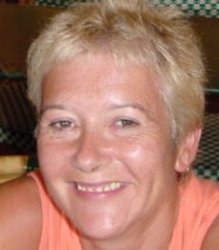I have been to more funerals since I have been here, and seen more dead people here than ever before in my life. There is no stigma against photos of dead bodies in all their gory glory, and if you do an image search for anything on the internet, whatever it is, from chocolate to beaches, from recipes to transport, you will find pictures of dead bodies.
It is not surprising that there appear to be so many more deaths, as the health service and emergency services in particular, especially in rural areas, are not up to the same standards as say the UK or the USA. Heart conditions, diabetes and blood pressure problems are all on the increase, due in the main to a diet high in oil, salt and carbohydrates, and low in vitamins and protein. In addition exercise is in the main not a Dominican priority – most do not believe in walking anywhere – and medicines are often out of the financial reach of many to control their chronic conditions.Several people I know with diabetes do not have blood glucose monitors, and only realise they have a problem when it becomes serious.
As well as people dying due to medical issues, there are also the tropical diseases such as malaria, cholera and dengue which claim victims every year, in addition to people drowning in the ocean and rivers. Then there are the violent deaths. Dominican Republic has a homicide rate of 31 deaths for every 100,000 people. This compares to the USA at 4.8 and the UK at 1.23. As you can see there is a massive difference. There is a similar picture with traffic related deaths. The DR has 17.3 traffic fatalities per 100,000 population per year, compared to the US at 12.3 and the UK at 3.59. If we look at the figures per 100,000 miles driven per vehicle, the DR is 140.7 traffic deaths, the USA 15 and the UK 7. Incredible really and probably something to do with the lack of law enforcement on using well maintained vehicles, wearing helmets on motorbikes, not drinking and driving, wearing seat belts and having a driving licence.
When someone dies they are usually buried the next morning, not only as it is the custom, but also due to the lack of refrigeration facilities, and it is very hot here. Once death has been certified, the body is placed in a coffin, which almost always has a viewing window for the face, and then it is taken to the home, where the front room is turned into a shrine. The better off will often use the services of a funeral parlour and the body will stay there. There will be no music or television in the house until the mourning period is over.
There is a wake which goes on all night. The family will rent a carpa or tarpaulin which will be set up outside with plastic chairs under it. This will protect the guests from the sun or the rain. Coffee is always served, and often rum is available too. Some funerals, especially Haitian ones, will have drummers and singing, and the catholic ones will usually involve a priest. The close family will spend their time next to the coffin, and are usually very vociferous with much wailing and breast beating. Many people will come to pay respects, dressed in either black or white or a combination.
The next morning the hearse will arrive and everyone goes to the cemetery, where the grave has already been dug. If the coffin is a nice mahogany one it will be hacked with machetes to prevent anyone robbing it. There is a market for second hand coffins. The coffin is then placed in the grave – usually nowhere near six feet deep, more like two – and then everyone goes back to the house.
The grieving period is nine days, and on the ninth day the coffee and the carpa come out again and everyone goes to the house to pay their respects again. Following the end of the ninth day, the television is put back in the front room, and life gets back to normal.
Lindsay de Feliz lives in the middle of nowhere in the Dominican Republic with her Dominican husband, one stepson, 8 cats and 3 dogs. She was formerly Marketing Director of various financial companies in the City of London, and left the UK around 11 years ago to travel the world as a scuba diving instructor. She eventually came to the Dominican Republic on a 6 month contract, fell in love with the country and its people and stayed. Lindsay has a blog www.yoursaucepans.blogspot.com and is currently writing a book about her experiences over the last 10 years.

